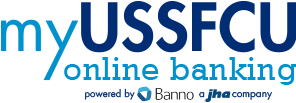Check Washing - How to Protect Yourself
Published: March 13, 2025

Have you ever sent a check that was cashed, but the recipient never received it? You may have been a victim of check washing. This type of fraud involves altering the payee name and dollar amount on a check before fraudulently depositing it. Criminals often steal checks from mailboxes and use chemicals to erase ink, allowing them to rewrite the details. In some cases, they even use copiers or scanners to create counterfeit checks.
Check washing is a growing concern, with the U.S. Postal Inspection Service recovering more than $1 billion in counterfeit checks and money orders every year.* Fortunately, there are steps you can take to safeguard your finances.
Protect Yourself from Check Washing
Safe Mailing Practices
- Deposit mail before the last pickup – If using a blue USPS collection box, drop off outgoing mail before the last scheduled pickup of the day.
- Use the Post Office for check deposits – Instead of placing checks in your home mailbox or USPS boxes, deliver them inside the post office for added security.
- Retrieve mail frequently – Never leave mail sitting in your mailbox overnight.
- Hold mail during travel – If you're away, request a mail hold at the post office or have a trusted friend or neighbor collect your mail.
Make Your Checks More Secure
- Use a permanent black gel pen – Gel ink soaks into the paper, making it harder to wash away.
- Order checks with security features – Opt for checks with built-in fraud protection, such as watermarks and heat-sensitive ink.
- Use security envelopes – When mailing checks, use security-tinted envelopes to make it harder for criminals to see the contents.
- Keep personal details off checks – Avoid including sensitive information such as your phone number or Social Security number.
Stay Alert and Take Action
- Monitor your bank transactions regularly – Check your account frequently for unusual activity. Set up alerts for large or unexpected withdrawals.
- Opt for electronic payments when possible – Digital transactions reduce the risk of check fraud but require strong password management for security.
- Limit funds in your check-writing account – Maintain a separate account for daily transactions and only keep enough funds to cover checks you issue.
- Report lost or stolen checks immediately – If you suspect check fraud, notify your financial institution, file a police report, and contact the U.S. Postal Inspection Service.
Check washing is a serious form of financial fraud, but by staying proactive and following these best practices, you can reduce the risk of becoming a victim. If you suspect fraudulent activity on your account, act quickly to minimize damage.
Article content is provided for informational purposes only.



